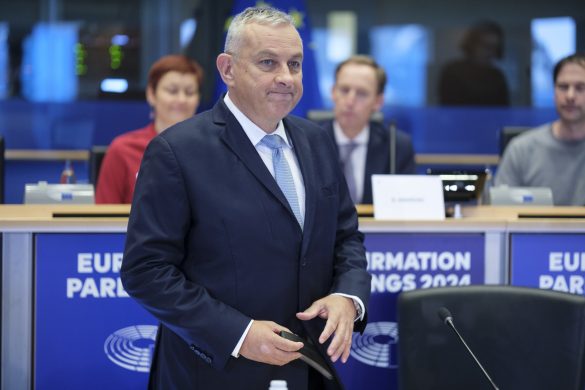President George Bush last week brazenly brushed aside British Prime Minister Tony Blairs call for a doubling of aid to Africa. Blair and other European leaders have taken on the task of fighting extreme poverty – and Bush watches from the sidelines.
To justify its dereliction (opgivende holdning), the Bush administration perpetuates a mythology that contributes to the premature deaths of millions of people each year, writes Jeffrey D. Sachs, wellknown American economist and development expert in a column this week in the Los Angeles Times.
Jeffrey D. Sachs goes on:
The US is a generous provider of aid to Africa, the mythology says, but Africa is corrupt and mismanaged and thus cannot absorb more aid. In addition, there is no room in the budget to do any more than what we are currently doing. This multipart fantasy is widely shared in the US and recalls Napoleons dictum that “history is a fable often told.”
The facts are otherwise.
Total annual US aid for all of Africa is about 3 billion US dollar (18,4 milliarder DKR), equivalent to about two days of Pentagon spending. About 1 billion dollar pays for emergency food aid, of which half is for transport. About 1,5 billion is for “technical cooperation,” essentially salaries of U.S. consultants.
Only about 500 million dollar a year – less than one dollar per African – finances clinics, schools, food production, roads, power, Internet connectivity, safe drinking water, sanitation, family planning and lifesaving health interventions to fight malaria, AIDS and other diseases.
The myth that more aid would be squandered is pernicious (skadelig-ødelæggende).
Once in a while, the industrialized countries try to accomplish something real in Africa. Notable examples are smallpox eradication begun in the 1960s, control of river blindness in the 1970s, increased child immunization in the 1980s, Jimmy Carters initiatives to fight Guinea worm, trachoma and leprosy (spedalskhed) in the 1990s and Rotary Internationals bold efforts to eliminate polio this decade.
These interventions throughout Africa were remarkably successful. That they could be easily monitored was a key to their success. More victories could have been achieved – in food production, malaria control and AIDS treatment – if the efforts had been undertaken. Instead, US aid was minuscule (forsvindende lille) and misdirected into consultants salaries and emergency food shipments.
If the administration were more than modestly interested in helping Africa, it could learn about the huge gains made possible by Blairs plan to provide about 50 billion dollar a year to Africa by 2010 – with the US kicking in 15 billion to 20 billion. With that money, Africa could control killer diseases, triple food production and cut hunger, and improve transportation and communications.
These steps, incidentally, would accelerate the continents transition to lower fertility rates and slower population growth because they would contribute to a lower child mortality rate and economic gains, which would help persuade couples to have fewer children.
The new aid would not involve guesswork or be a blank check.
Consider one example. Malaria will kill up to 3 million children this year, overwhelming Africas meager hospitals. Yet five measures could end this:
1) long-lasting insecticide-treated bed nets (cost: 7 dollar per net);
2) effective medications freely available to the poor;
3) community health workers trained in malaria control;
4) medical diagnostic capacity at the local level; and
5) indoor insecticide spraying where appropriate.
The cost: 3 billion dollar a year for the industrialized countries, 1 billion for the U.S. – about 10 times what is currently spent on malaria control.
The administrations claim that budget restraints prevent more spending on Africa is the most cynical of its contentions.
The president has cut taxes by more than 200 billion dollar (1.200 milliarder DKR) a year, with the wealthiest Americans the chief beneficiaries, and has raised military spending by another 200 billion a year.
But when 20 billion (120 milliarder DKR) dollar is needed to keep the poorest of the poor in Africa alive and put the continents economies on a path toward long-term growth, there is no money available.
The millions of Africans who die young and the hundreds of millions going hungry are not victims of fate. They are the consequences of U.S. policy.
Americans want to do better.
Jeffrey D. Sachs is a Columbia University economist and special advisor to U.N. Secretary-General Kofi Annan.
Measure of a Continents Misery
Leading causes of death in Africa (in 2002)
HIV/AIDS: 2,1 million
Malaria: 1,1 million
Cardiovascular disease (kredsløbsygdomme): 1 million
Diarrhea-related diseases: 707.000
Poor nutrition: 143.000
Syphilis 89.000
War: 85.000
Number of people living with HIV in Sub-Saharan Africa: 25,4 million (2004)
Number of United Nations peacekeepers in Africa: 51.094 (2005)
Worst life expectancy in Africa: 34 years, Sierra Leone (2002)
Worse rate of HIV infection in adults, ages 15 to 49: 38,8 per cent, Swaziland (2004)
Source: United Nations and World Health Organization
Kilde: The Push Journal















